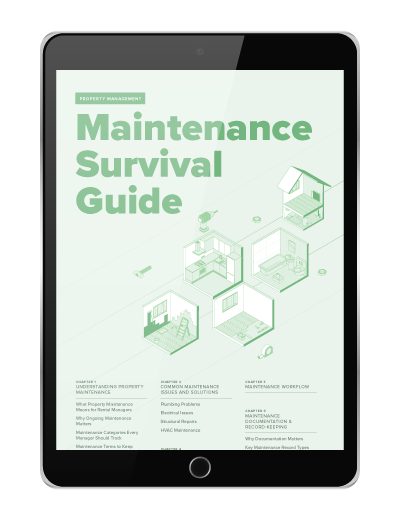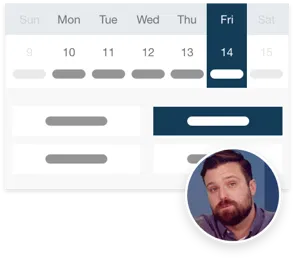As a residential property manager, you’ll encounter various types of leases during your career. One of the lease types you may come across is the modified gross lease. But what exactly is a modified gross lease, and how does it affect your work as a property manager?
In this blog post, we’ll explore what a modified gross lease is, how it works, and why it might be a good option for you and your tenants. Let’s break it down in simple terms.
What Is a Modified Gross Lease?
A modified gross lease is a type of rental agreement where the tenant pays a base rent, plus some, but not all, of the additional operating expenses related to the property. In other words, the landlord covers certain costs, such as property taxes or insurance, while the tenant is responsible for others, such as utilities or maintenance. The exact expenses covered can vary from one lease agreement to another.
This lease structure is common in both residential and commercial properties, but for residential property managers, it’s essential to understand how this can impact the tenant’s total cost and your overall property management approach.
How Is a Modified Gross Lease Different from Other Lease Types?
Before diving deeper into the modified gross lease, it helps to understand how it compares to other common lease types. The most frequently encountered lease types are gross leases and net leases.
Gross Lease
In a gross lease, the tenant pays a fixed monthly rent, and the landlord covers all operating expenses, including property taxes, insurance, utilities, and maintenance. This lease structure simplifies things for tenants, as they know exactly what they’ll pay each month.
Net Lease
A net lease, on the other hand, is structured so that the tenant pays the base rent plus some or all of the property’s operating expenses. In a single net lease, the tenant may pay for property taxes. In a double net lease, they might cover property taxes and insurance. In a triple net lease, the tenant is responsible for taxes, insurance, and maintenance costs.
Modified Gross Lease
The modified gross lease sits somewhere in between these two. It’s less complicated than a net lease, as it doesn’t pass all operating expenses to the tenant, but it also allows for more flexibility than a gross lease. The landlord and tenant share the responsibility for different operating costs.
Typical Expenses Covered in a Modified Gross Lease
So, what kinds of expenses are typically included in a modified gross lease? Here’s a list of the most common ones:
Utilities: This can include water, gas, and electricity. While some leases may have tenants pay their own utilities, in a modified gross lease, the landlord might cover some or all of these.
Maintenance: The landlord might be responsible for major maintenance (e.g., building repairs), while the tenant may cover routine tasks like cleaning or lawn care.
Property Taxes: In some cases, the landlord may include property taxes in the base rent, or they may split the cost with the tenant.
Insurance: The landlord often maintains the property’s insurance, but the tenant might need to cover renter’s insurance or certain additional insurance costs.
The expenses included in the lease are usually outlined clearly in the lease agreement, keeping both parties in the know about what they are responsible for.
Benefits of a Modified Gross Lease for Tenants and Landlords
Benefits for Tenants
Predictable Rent Costs: A modified gross lease provides tenants with a clear understanding of their monthly rent obligations, as the base rent and shared operating expenses are defined upfront.
Potentially Lower Costs: Since the landlord covers certain expenses, tenants may enjoy lower rent prices than they would with a net lease, where they’d pay for more of the operating costs.
Less Financial Burden: Tenants might appreciate not having to cover all property-related expenses, especially for major items like property taxes or insurance.
Benefits for Landlords
Stable Income: By covering some expenses while passing others to the tenant, a modified gross lease helps landlords maintain stable cash flow while ensuring they aren’t overly burdened with costs.
Flexibility: The modified gross lease allows landlords to customize their lease agreements, which can be a valuable tool for attracting tenants while also protecting their interests.
Tenant Satisfaction: Tenants may appreciate the more straightforward cost-sharing arrangement compared to a net lease, which can result in better tenant retention.
Example of a Modified Gross Lease in Residential Property Management
Let’s say you’re managing a 10-unit apartment building, and you decide to use a modified gross lease for your units. In this case, you set the base rent at $1,000 per month. You also agree to cover the property taxes and insurance costs, which amount to $150 per unit each month. The tenant is responsible for paying their own utilities, including electricity, gas, and water.
So, the tenant pays:
- Base Rent: $1,000
- Utilities: $150 (electricity, gas, water)
- Total Rent: $1,150
In this scenario, the landlord is responsible for certain expenses, but the tenant also contributes toward some of the costs. This creates a balanced approach that can work well for both parties.
Key Considerations for Property Managers
When using a modified gross lease, there are several things to keep in mind:
1. Determining Expenses
Decide which expenses will be shared between you and your tenants. Be sure to clearly outline which costs you’ll cover and which the tenant will be responsible for. This prevents confusion or misunderstanding later on.
2. Setting the Base Rent
When calculating the base rent, take into account the operating expenses that you, as the landlord, will be covering. You’ll need to balance keeping the rent competitive for tenants while covering your expenses.
3. Clear Communication
Be transparent with tenants about the specific costs they are responsible for. You might want to provide an itemized breakdown of rent and expenses, so tenants fully understand what they are paying for.
4. Reviewing Lease Terms Regularly
Lease agreements should be reviewed periodically to confirm that they still meet your needs and the market’s conditions. You might find that adjusting the terms, such as adding or removing certain expenses, is beneficial over time.
Frequently Asked Questions
What is a modified gross lease?
A modified gross lease is a rental agreement where the tenant pays a base rent and a portion of the property’s operating expenses. These expenses can include utilities, property taxes, and insurance, among others. The landlord covers specific costs, while the tenant is responsible for others, creating a balanced sharing of expenses.
How is a modified gross lease different from a net lease?
In a net lease, the tenant is responsible for paying rent plus all or most of the property expenses, such as taxes, insurance, and maintenance costs. In contrast, a modified gross lease divides these expenses between the landlord and tenant, with the landlord typically covering significant expenses like property taxes and insurance.
Why would a landlord choose a modified gross lease?
A modified gross lease offers flexibility and predictability. It allows landlords to attract tenants by keeping base rent competitive while recovering some of the property’s operating expenses. This lease structure can also simplify budgeting for both parties, as it clearly delineates responsibilities for specific costs.
Read more on
